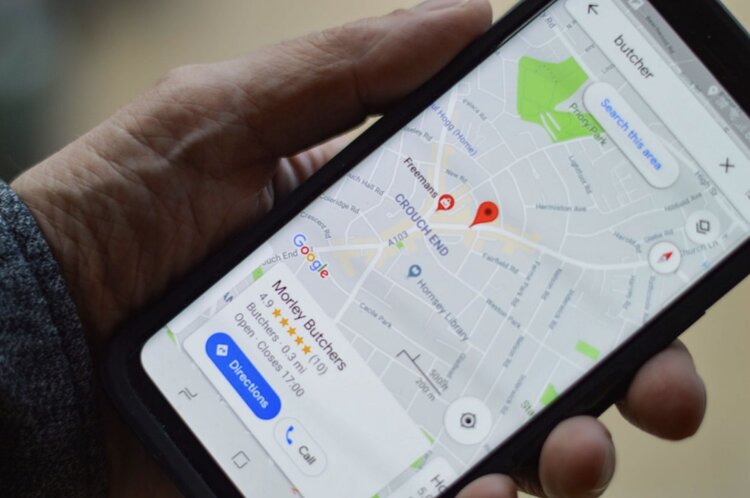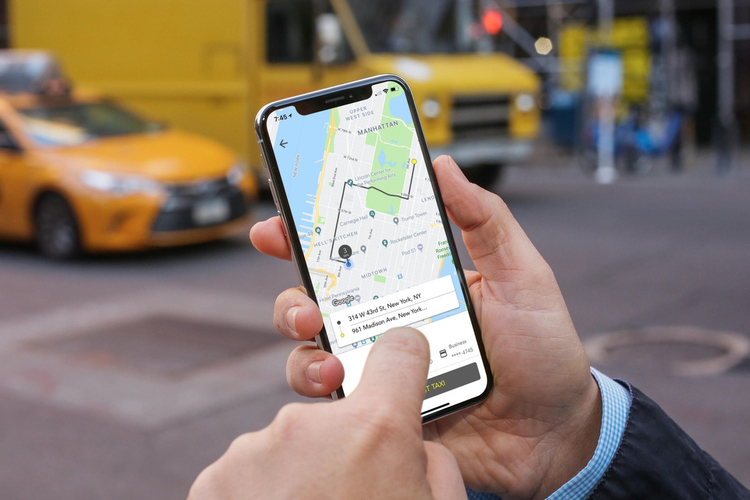Points of interest and POI data have become big buzzwords in recent years. Gone are the days of flicking through a telephone directory to find local amenities. In today’s world, people want to know what interesting places are nearby, where they’re located and how to get to them – all via their smartphone.
But what exactly is a point of interest ? Why are they used? And how do you find the best POI data for your website or app? We cover all the basics in this handy article, including where to find the best POI database providers.
Want to talk to us about the PlotProjects POI API? Then get in touch today!
What is a point of interest?
A point of interest (abbreviated POI) is a specific place or location point on a map that someone might find interesting or useful. It can be a restaurant, a hotel or a tourist attraction, or it can be ordinary places like ATMs, gas stations, schools or parks. A point of interest can be temporary such as an event, or it can be permanent such as a building or even a city.
Points of interest are usually defined by their geographical coordinates along with some additional attributes such as name, category, address, opening hours and contact details. This information is important because it feeds many location-based applications such as digital maps and navigation systems. By connecting to this data, you can add a deep level of location information to your website or app.
Points on interest examples
Grocery stores, restaurants and retail stores are all examples of points on interest. They can also be specific physical locations of interest such as parks, beaches or tourist attractions. Here’s a look at some of the most common examples of points of interest.
- Arenas & stadiums
- Schools, churches and distinctive buildings
- Cafes, restaurants & pubs
- Shops & malls
- Car parks & speed cameras
- Tourist attractions
POI data – common applications
People and businesses rely on POI data every day for a variety of reasons. Users of mobile devices rely on point of interest data to navigate their environment and find amenities and services in a particular location. While businesses can leverage POI data to deliver services, gain valuable market insights and make better data-driven decisions.
Here are some common applications of point of interest data:

Google Maps
POI mapping allows users to look for nearby services and amenities such as the nearest gas station, hotel, restaurant, cafe, supermarket, ATM and more.
Developers & mobile users
With access to POI databases, developers can create location-based applications that provide users with instant, accurate and up-to-date location information. Users can navigate traffic routes, find local landmarks, discover nearby restaurants and much more, all in real-time using a mobile app.
Location-based marketing
Marketers and advertisers leverage point of interest data for geofencing and geotargeting, to reach relevant audiences with location-based ads and content. This data make it possible to gain valuable behavioural insights, build audience profiles and segments, and deliver personalized ads to users when they are near a point of interest.
Address autocomplete
Point of Interest APIs can be used to provide address data for autofill functionality in online forms and checkouts. This makes the user experience much better when they are typing their address at checkout, plus it ensures that businesses get accurate and verified address data at the point of entry. Find out more in our guide ‘What is address autocomplete?” or check out address autocomplete API.

Points of interest in retail
In retail, POI data can be used in combination with mobile location data to help retailers drive sales and provide better services to their customers. It can be used to optimize marketing, for competitive analysis, for site analysis for new stores and to plan expansion in a new location.
Food & parcel delivery
The food and parcel delivery industry needs accurate point of interest data to make deliveries and optimize workforce efficiency. Accurate residential and commercial POI data helps delivery applications calculate delivery times, map specific regions, identify efficient routes and gain a competitive advantage.
Real estate
Location is paramount in real estate. POI datasets are used to analyze locations for investment and construction. It also provides customers who want to buy or rent a property with valuable insights about the local area and amenities.
Telecoms, insurance & financial services
Point of interest data can be used in insurance and financial sectors for mapping, planning, assessment and improvements across a city or region. It can also help telecom companies to assess coverage needs and plan expansion in specific locations.
Government & public sector
POI data supplies insights about regional facilities and public infrastructure such as public transport, healthcare etc, allowing local authorities and governments to assess the community’s needs for optimization of services in the area and urban development planning.
Logistics & transportation
E-commerce stores, postal services, fleet and freight businesses and many more can use POI data to optimize routes, improve operations and save time and costs. POI data can also be used to build reliable and efficient apps such as cab hailing services or transport ticketing apps.

In summary, point of interest data opens up endless opportunities to enrich decision-making and spatial analytics in a variety of different industries. In the following section we’ll explain how to find POI data using databases and POI data APIs.
How to find point of interest data
So how do you find point of interest data? Data providers acquire it from a variety of sources, from government directories, to web sources like Google Maps, user-generated location data or by manual verification. All of these sources provide some POI data however it varies in terms of attributes, accuracy and freshness.
Here’s a closer look at some of the most popular point of interest data collection methods.
Website sources
The most basic way of getting POI data is from web sources like Google Maps and OpenStreetMap. Web scraping tools can be used to export POI information straight into a database or file, however there are some limitations with this. Some web sources allow this type of extraction, while others have methods in place to prevent mass scraping. It can be very time consuming, and the data isn’t always kept up-to-date.
Government directories
Many governments make commercial location information into POI datasets which are available for public use. However, this also comes with its limitations. As with web sources, the emphasis is on businesses to keep their details up to date. Therefore the data can become inaccurate over time.
User generated data
With the rising use of social media platforms comes an increase in user-generated content and location data. Just by checking in at particular location, a user pins a location which can be added to a POI database. Many businesses and organizations use this data or buy it from providers who collect it. Again, this data relies on the user and also their device and location settings, so it is not guaranteed to be accurate.
Manual verification
Many data providers manually verify their data on the ground with a custom smartphone app. This results in a more accurate data set compared to web scraping or other automated methods. POIs are constantly added, verified and kept up-to-date.
POI data providers
The best POI data providers provide high-quality global data across myriad countries, offering millions of places and. points of interest. Their data offerings consist of granular attributes to meet specific customer use cases, such as restaurants, retailers, hospitality, healthcare providers and more. They process huge amounts of data events daily, deriving up-to-date real world insights.
Google Places API – pros & cons
Google Places API is hailed as having the best accuracy and the most comprehensive POI datasets, as well as a great team that keeps them fresh and up-to-date. However its licensing terms are quite restrictive and it can be hard to use their data in the way you need.
Businesses often choose to augment their Google Places API data or to use alternatives such as Facebook Places, Foursquare Places, Factual Places, Safegraph Places, Tom Tom or other data provider. For instance, when it comes to building footprint data (geofences) for a POI, Google has that data internally but it isn’t offered via an API.
OpenStreetMap – pros and cons
Another top-rated POI provider is OpenStreetMap, a source for all geographical datasets that are publicly available. Using this platform, projects that use POI data can feed up-to-date and additionally back to OpenStreetMap, which improves the databases. One drawback with OpenStreetMap for app or website developers is that the API to the databases is not very reliable. The servers on which the data is hosted are provided by volunteers and therefore the uptime is not guaranteed.
Choosing a POI database provider
Choosing a POI data provider or POI API can be a tough task. The physical world is constantly changing, making it difficult to maintain accurate POI databases. Even with top machine learning and data science teams, providers can still find bugs and inaccuracies in their databases.
Quality and accuracy are key for POI data, however you will want to think about other factors such as the data provider’s delivery capabilities, the effort you’ll need to prepare the data for use, and how you’ll choose from the array of POI data providers out there.
Tips for evaluating a POI database vendor
Evaluating a POI database vendor is no easy feat. A good starting point is to define your goals, think about the category of data you need, decide on the frequency of updates, and think about the level of accuracy you require. Check out our checklist below to help you evaluate a POI database provider:
- What countries does it cover? Is it international?
- Accuracy. How accurate is the data? Are the businesses still open or have the shut down? are the addresses real? Is the data free from errors?
- Is the data complete? What is the fill rate for attributes? Does it include category, opening hours, contact details?
- Granularity. Are the POI locations just addresses? Centroids? Are they geofences for a POI?
- Price: Does it offer a free POI database? Are the paid-for subscriptions good value? What kind of support is offered?

Geofencing & points of interest
POIs and geofencing make a great pair. They make location-based campaign creation more efficient and supercharge data insights allowing you to understand your customers behaviour and interests from all angles.
You can create geofences around all types of points of interest such as department stores, supermarkets and shopping malls. When an app user crosses your geofences, you can target them with relevant location-based ads. You can also gain valuable insights for building audience profiles and segments for better targeting.
Without a POI database, you would need to know the name and location of each individual boutique or store. However, a POI database allows you to find all locations that fall into a particular category in one go.
PlotProjects POI data API
PlotProjects has seen the growth in demand for up-to-date POI data APIs. We believe that OpenStreetMap is a very reliable source and will be improving very quickly. However, due to the open source structure it cannot guarantee the reliability of API to get the POI’s requests. PlotProjects has developed a solution for this issue and offers a reliable database providing the OpenStreetMap POI’s.
For geofencing applications, where it’s vital to know the precise location of a place such as turning location data into store visit insights, PlotProjects geofencing platform makes us superior to other Places database vendors.
A free POI database
As we are going to launch this service soon we are going to offer our POI data API with a reliable uptime for free under a fair use policy. Which means that anyone can try and use it. However, if the load of requests gets to heavy we will charge a reasonable fee to guarantee the service.
See our address autocomplete API
If you’d like to learn more about using POIs for your own location data and geofencing campaigns, contact PlotProjects today.
